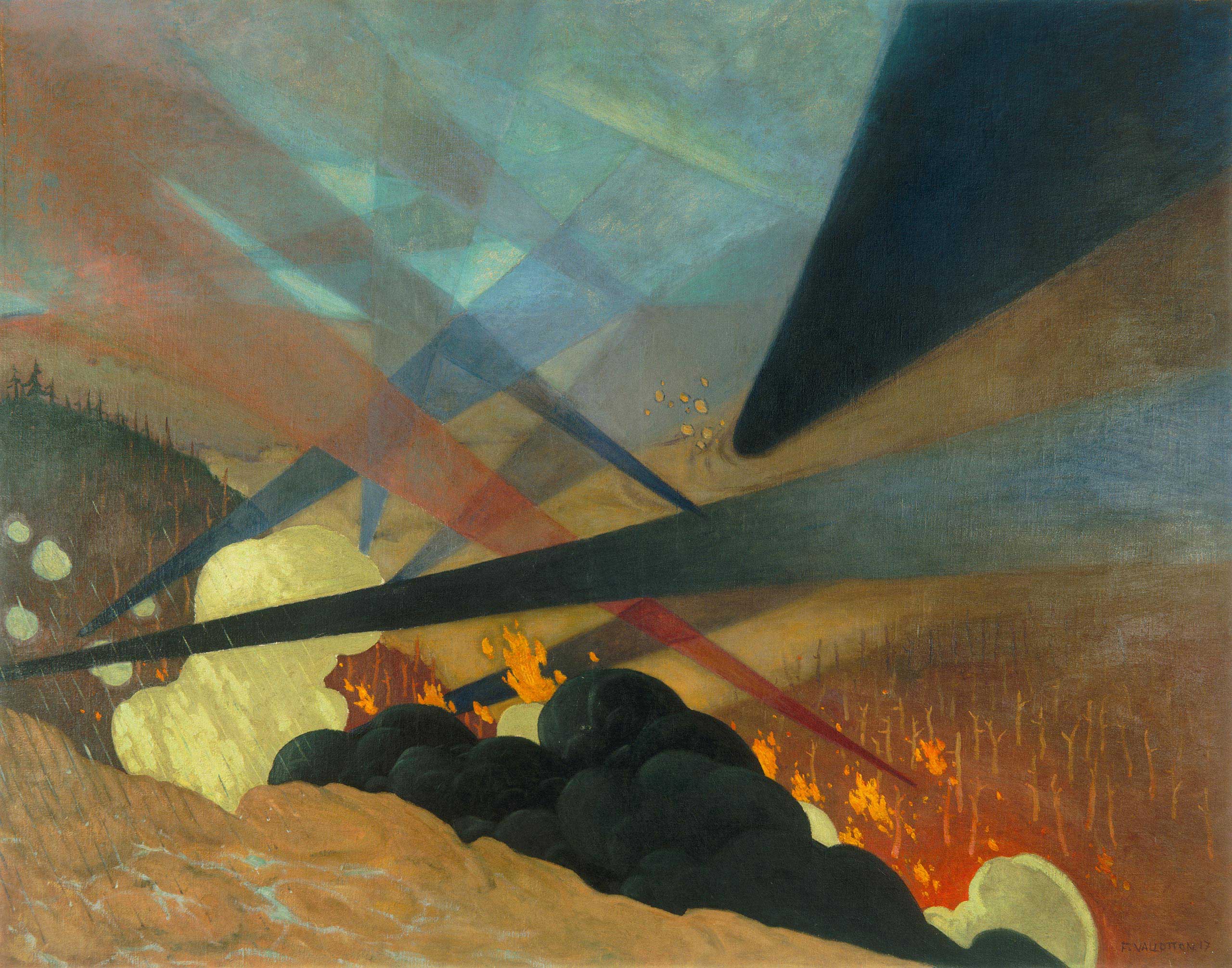
Trailer of the exhibition View from the front. |
Seven fronts for one war |
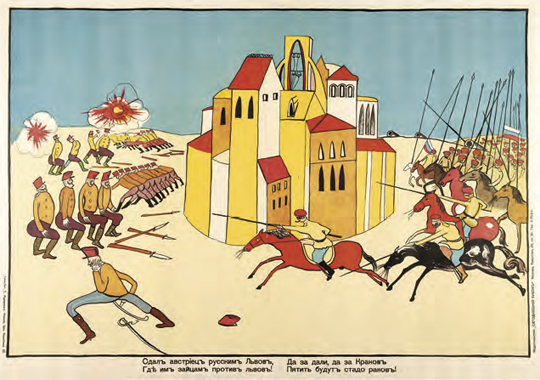 |
|
|
Aristarkh Lentoulov et Vladimir Maïakovski L’Autrichien a rendu Lvov aux Russes 1914 Paris, musée de l’Armée. |
1/7 |
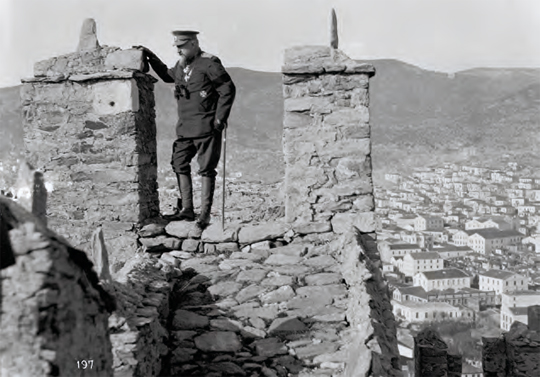 |
|
|
Ferdinand 1er (roi de Bulgarie) sur les ruines de la forteresse de Kavala en Grèce décembre 1912 Paris, musée de l’Armée. |
2/7 |
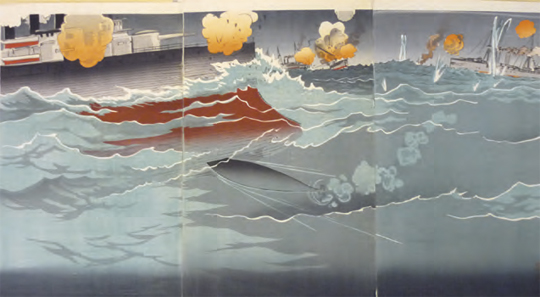 |
|
|
Kobayashi Kiyochika Grande bataille navale de Ryōjun [Lüshunkou]. 1904 Nanterre, Bibliothèque de documentation internationale contemporaine |
3/7 |
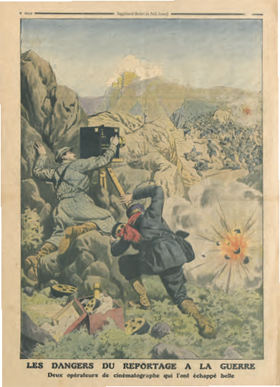 |
|
|
Les dangers du reportage à la guerre. Deux opérateurs de cinématographe qui l’ont échappé belle 3 novembre 1912 Nanterre, Bibliothèque de documentation internationale contemporaine |
4/7 |
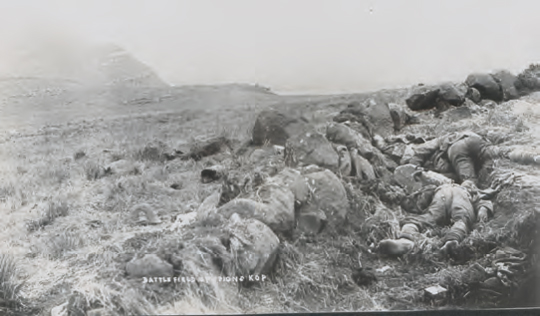 |
|
|
Anonyme Champ de bataille de Spionskop [Spion Kop] Nanterre, Bibliothèque de documentation internationale contemporaine |
5/7 |
|
Albert Le Play Parcours d'artiste musée de l’Armée © Paris - Musée de l'Armée, Dist. RMN-Grand Palais |
6/7 |
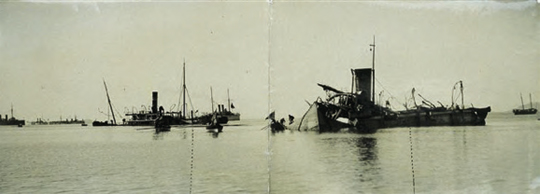 |
|
|
Anonyme Les Bateaux russes désemparés dans la rade de Chemulpo [Incheon]. Le Sungari – Le Koreïets 1904 Paris, musée de l’Armée |
7/7 |
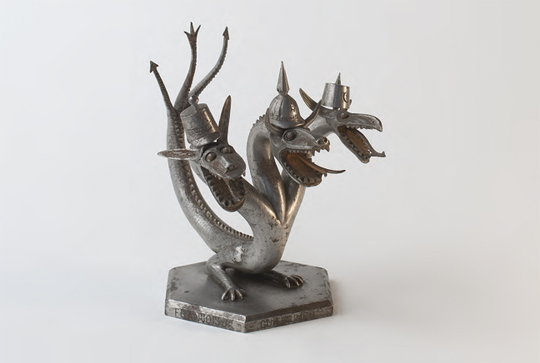 |
|
|
E.J.L. Guillaume II, François-Joseph, Abdul Hamid 1916 Nanterre, Bibliothèque de documentation internationale contemporaine. |
1/9 |
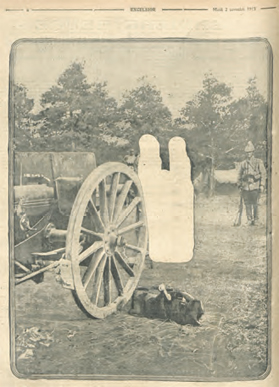 |
|
|
Echoppage de la photographie par la censure 2 novembre 1915 Nanterre, Bibliothèque de documentation internationale contemporaine. |
2/9 |
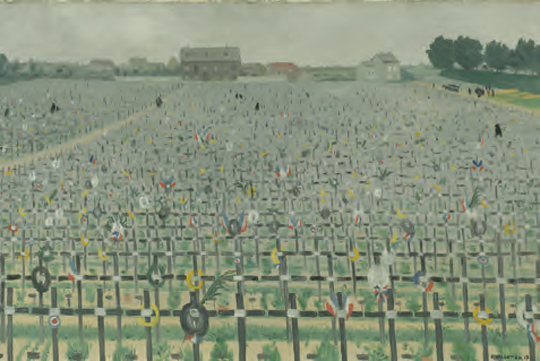 |
|
|
Félix Vallotton Le cimetière militaire de Châlons 1917 Nanterre, Bibliothèque de documentation internationale contemporaine. |
3/9 |
|
Georges Victor-Hugo Parcours d'artiste Nanterre, Bibliothèque de documentation internationale contemporaine. |
4/9 |
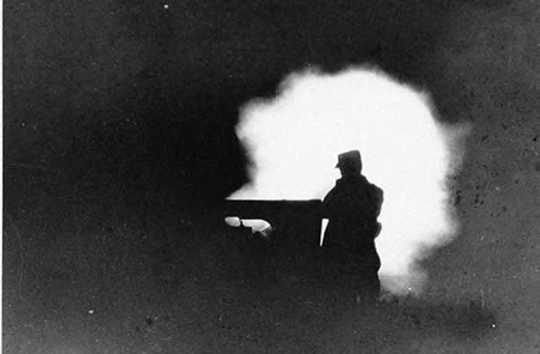 |
|
|
Louis Danton Tir de nuit, bataille de la Marne, Tracy-le-Mont 6 septembre 1914 Paris, musée de l’Armée. |
5/9 |
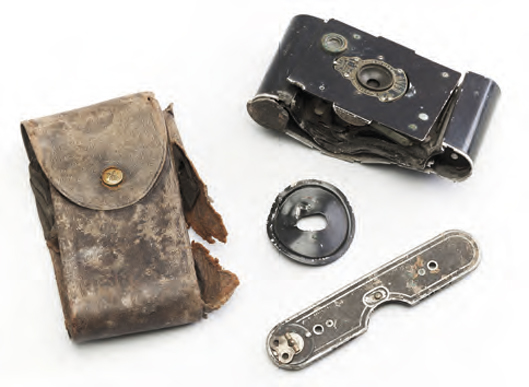 |
|
|
Eastman Kodak Co. Appareil photographique Vest Pocket Automatic Kodak détruit par un éclat d’obus Paris, musée de l’Armée. |
6/9 |
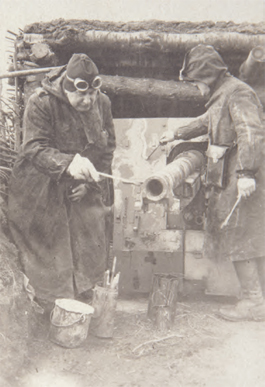 |
|
|
Jean Courboulin Jean-Louis Forain camouflant un canon 1914 Paris, musée de l’Armée. |
7/9 |
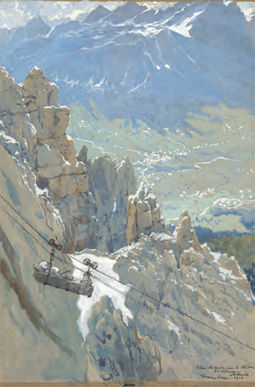 |
|
|
Georges Scott Blessés descendus par le téléphérique 1917 Paris, musée de l’Armée. |
8/9 |
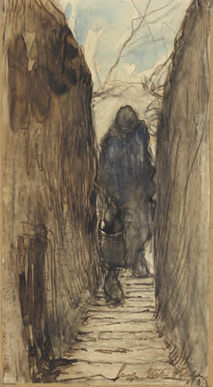 |
|
|
Georges Victor-Hugo Poilu dans une tranchée 1915-1917 Paris, musée de l’Armée. |
9/9 |
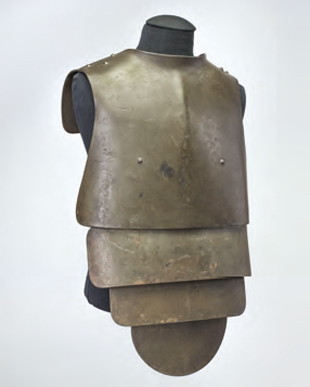 |
|
|
Cuirasse de tranchée dite « Sappenpanzer » Paris, musée de l’Armée. |
1/9 |
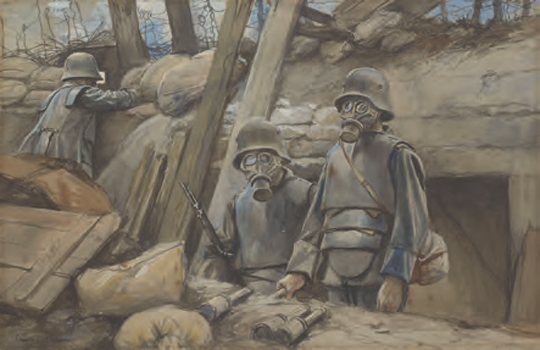 |
|
|
François Flameng Allemands équipés de cuirasses de tranchées et de masques à gaz août 1917 Paris, musée de l’Armée. |
2/9 |
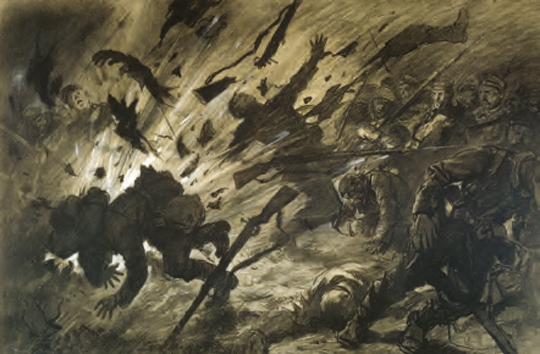 |
|
|
Georges Scott Effet d’un obus dans la nuit ou La Brèche avril 1915 Paris, musée de l’Armée. |
3/9 |
|
Robert Lortac Et nos poilus, qu’en pensent-ils ? (extrait) Paris, Gaumont Pathé Archives. (Inv. 1748GJ 00009) |
4/9 |
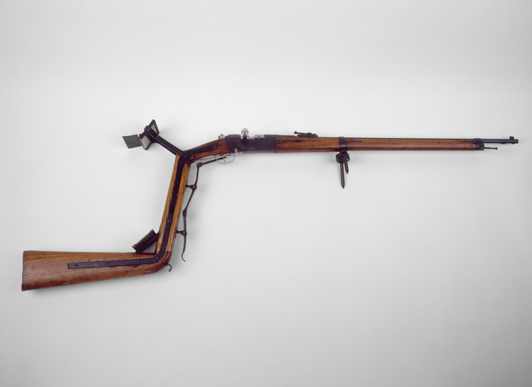 |
|
|
Fusil Lebel de tranchée Paris, musée de l’Armée. |
5/9 |
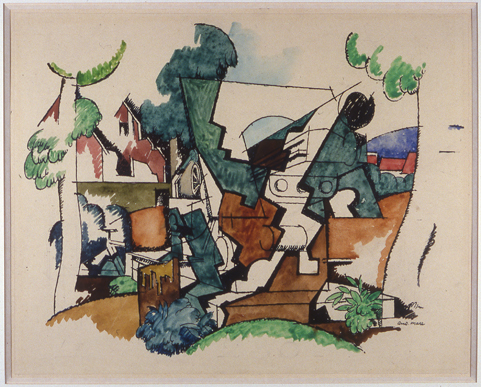 |
|
|
André Mare [Le 280 : canon camouflé] 1914-1918 Nanterre, Bibliothèque de Documentation Internationale Contemporaine. |
6/9 |
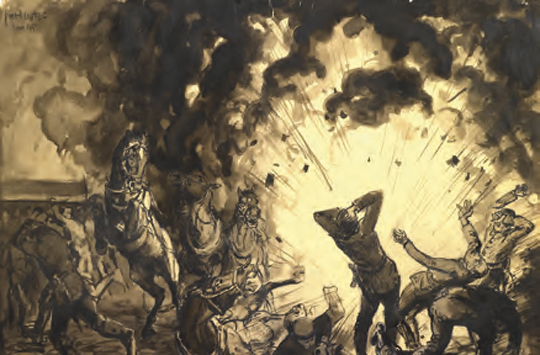 |
|
|
Karl Lotze [Attelage dans une explosion d’obus] 1915 Nanterre, Bibliothèque de Documentation Internationale Contemporaine. |
7/9 |
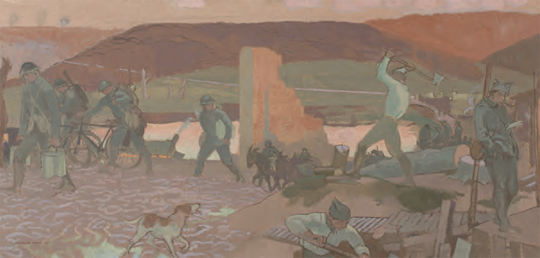 |
|
|
Maurice Denis Soirée calme en première ligne à Barisis 1917 Nanterre, Bibliothèque de Documentation Internationale Contemporaine. |
8/9 |
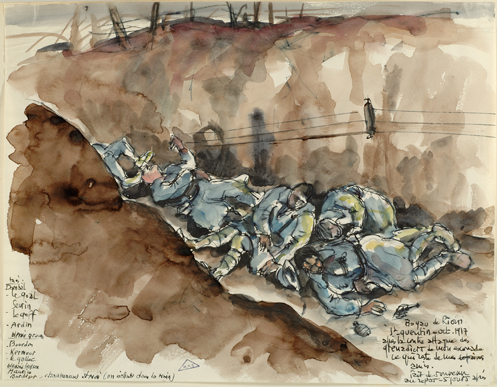 |
|
|
Henri Camus Boyau de Riom, Saint-Quentin, octobre 1917. Après la contre-attaque des grenadiers de mon escouade : ce qui reste de mes amis Nanterre, Bibliothèque de Documentation Internationale Contemporaine. |
9/9 |
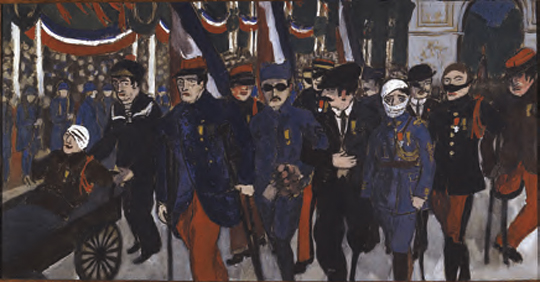 |
|
|
Jean Galtier-Boissière Fêtes de la Victoire : le défilé des mutilés 1919 Nanterre, Bibliothèque de documentation internationale contemporaine |
1/6 |
|
François Flammeng Parcours d'artiste musée de l’Armée © Paris - Musée de l'Armée, Dist. RMN-Grand Palais |
2/6 |
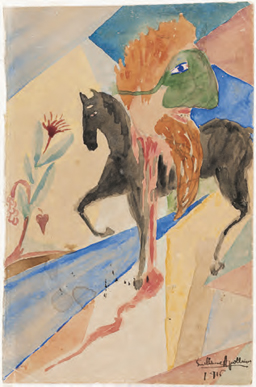 |
|
|
Guillaume Apollinaire Autoportrait en cavalier masqué décapité 1916 Paris, musée de l’Armée. |
3/6 |
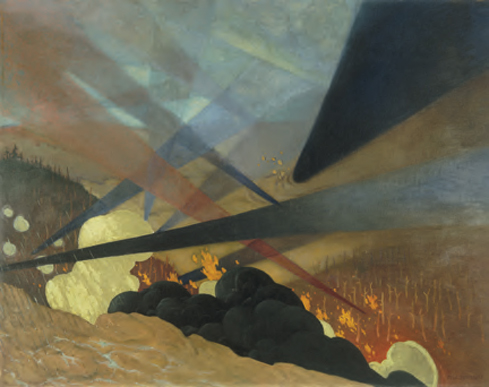 |
|
|
Félix Vallotton Verdun, tableau de guerre interprété, projections colorées noires bleues et rouges terrains dévastés, nuées de gaz 1917 Paris, musée de l’Armée. |
4/6 |
|
Georges Scott Parcours d'artiste musée de l’Armée © Paris - Musée de l'Armée, Dist. RMN-Grand Palais |
5/6 |
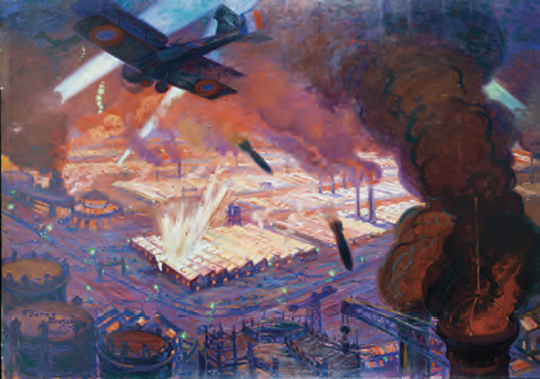 |
|
|
Maurice Busset Bombardement de Ludwigshafenz 1918 Paris, musée de l’Armée. |
6/6 |
Agenda |
|
International conferenceThe international conference Painters and the Great War: commissions, production and collections – towards a comparative history is organized by the CREA (EA 370) of the Université de Paris Ouest Nanterre La Défense, the Bibliothèque de documentation internationale contemporaine, the musée de l’Armée and the Centre for Studies and Research on the German-speaking area (EA 4223) from December 4 to 6, 2014. This international conference takes as its subject the representations of the First World War by painters who experienced it. It will consider the works produced, and the conditions of their production, diffusion and reception. The principle focus will be on France, Great Britain and Germany, but the conference will also be open to broader comparisons with other countries engaged in the conflict including Italy, Russia, Belgium, Austria, the United States, Canada and Australia. Particular attention will be given to the institutional context of works’ production and diffusion, in connection with other themes and approaches.> For more information, please see the website of the Université Paris Ouest Nanterre la Défense (new window) > Download the programme, french content (pdf, 701Ko, new window) Thursday, December 4, 2014 > "Missions, official commissions, public and private collections". Université de Nanterre. Building V, Auditorium V. 9:00 am – 5:00 p.m. Friday, December 5, 2014. > "Official artists and avant-gardes". Musée de l’Armée. Auditorium Austerlitz. 9:30 am – 6:00 p.m. Saturday, December 6, 2014. > "Weapons, traumas, identities". Université de Nanterre. Building B - Conference Hall. 10:00 am – 4:30 p.m. conferencesThe musée de l’Armée and the Université permanente de la Ville de Paris organize a series of 4 conferences entitled At the very heart of and around the Great War which concern the various aspects of the First World War.Tuesday, November 4, 2014. > "One Billion Shells". Christophe Pommier - Musée de l’Armée. Wednesday, November 5, 2014. > "Invisible Wounds and the Great War". Michèle Battesti – IRSEM. Wednesday, November 12, 2014. > "The Tomboy and the Killer, the story of Paul and Louise, a deserter turned transvestite in the Paris of the Roaring Twenties". Fabrice Virgili – CNRS. Thursday, November 13, 2014. > "Near or distant. Trench warfare in the collections of the musée de l’Armée". Mathilde Benoistel and Laëtitia Desserrières - Musée de l’Armée. Film projectionsFrom November 18 to 22, in conjunction with the exhibition « Vu du Front. Représenter la Grande Guerre », the musée de l’Armée presents a series of film screenings on the Great War, the matrix event of the Twentieth Century that holds a unique place in cinema. An opportunity for the public to discover or rediscover iconic films such as King & Country by Joseph Losey (1964) or Johnny Got His Gun by Dalton Trumbo (1971).Tuesday November 18, 2014 at 7:30 p.m. Capitain Conan Directed by Bertrand Tavernier. France – 1996 (Colour - 130 minutes). Based on the Roger Vercel novel of the same name. Starring: Philippe Torreton, Samuel Le Bihan, Bernard Le Coq, François Berléand, Claude Rich, Catherine Rich. In September 1918, at the Bulgarian border, Captain Conan and his unit of 50 men, most of them former convicts, wage war by employing rather unorthodox methods such as close-quarters fighting, an efficient practice which proves to be deadly. On November 11, 1918, the Armistice is signed with Germany. However, the Armée d’Orient does not demobilize and carries on fighting. Billeted in Bucharest in allied Romania, Captain Conan’s soldiers create chaos and engage in looting and murder. As a commissioner and special rapporteur Norbert, an officer who had befriended Conan, is faced the difficult task to apprehend the culprits and bring them to justice. Wednesday November 19, 2014 at 7:30 p.m. The Officers’ Ward. Directed by François Dupeyron. France – 2001 (Colour - 135 minutes). Starring: Éric Caravaca, Denis Podalydès, Grégori Dérangère, Sabine Azéma, André Dussollier. At the beginning of August 1914, during a reconnaissance mission on horseback, Adrien – a young and attractive lieutenant, is hit by burning shrapnel that blows off the lower part of his face. He spends the rest of the War in the Parisian military Hospital of the Val de Grace in a special ward reserved for officers suffering debilitating disfigurement: a den of human suffering in which each sees in the eyes of the other the expression of what he himself is missing. Thursday November 20, 2014 at 7:30 p.m. Johnny Got His Gun. Directed by Dalton Trumbo. USA – 1971 (Colour – Black and white - 111 minutes). Starring: Donald Sutherland, Jason Robards, Charles McGraw, Timothy Bottoms. During the course of the Great War, Joe Bonham a young American full of enthusiasm decides to join his fellowmen at the Front. Following a massive bombardment, he wakes up in a hospital. While attempting to regain consciousness he soon realizes that he can no longer rely on his sense organs and that he has lost all his limbs. Friday November 21, 2014 at 7:30 p.m. King & Country. Directed by Joseph Losey. UK – 1971 (Black and white - 86 minutes). Based on John Wilson’s play Hamp and James Lansdale Hodson’s novel Return To The Wood. Starring: Dirk Bogarde, Tom Courtenay, Leo McKern, Barry Foster. In 1917, in the mud-entrenched Belgian village of Passchendaele, a battalion of the BEF is relieved for a few days of relaxation. Hamp, a young volunteer sits in a cellar turned into a prison, awaiting court-martial. A few days prior, as he was simply walking away from the guns, in a state of shellshock, he was arrested by a corporal... |
Documentary MonthAs part of the Mois du film documentaire, a series of documentaries on « War Letters » is organized by the Bibliothèque de documentation internationale contemporaine (BDIC) and the Bibliothèque publique d’information (BPI). November 7 to 27, 2014.concertsEchoing the exhibition, 9 concerts will be held in the prestigious Hotel des Invalides. This musical programming was organized jointly by the musée de l’Armée and the French disk label Éditions Hortus.Thursday October 16, 2014 at 8:00 p.m. Cathédrale Saint-Louis des Invalides The French Air Force Orchestra. Claude KESMAECKER, conductor. Damien PRADO, trombone solo. A tribute to Henri Dutilleux (1916-2013). DUTILLEUX, RESPIGHI, RAVEL, FALLA > Reserve your tickets online. Friday November 14, 2014 at 8:00 p.m. Grand Salon Isabelle DRUET, mezzo-soprano. Quatuor GIARDINI David VIOLI, piano Pascal MONLONG, violin Caroline DONIN, alto Pauline BUET, cello Au pays où se fait la guerre (In a country where war is raging). BONIS, OFFENBACH, CHAMINADE, FAURÉ, DONIZETTI, GODARD, DUPARC, DEBUSSY, HAHN, BOULANGER, DUBOIS An artistic partnership with the Palazzetto Bru Zane – Centre de musique romantique française in Venice. > Reserve your tickets online. Monday November 17, 2014 at 8:00 p.m. Grand Salon Einav YARDEN, piano DEBUSSY, SCHOENBERG, STRAVINSKI, RAVEL, GERSHWIN With the support from the cultural services of the Embassy of Israel in France. > Reserve your tickets online. Thursday November 20, 2014 at 8:00 p.m. Cathédrale Saint-Louis des Invalides The Symphonic Orchestra of the GARDE REPUBLICAINE. Sébastien BILLARD, conductor. Alain LEFÈVRE, soloist. FAURÉ, RAVEL, MATHIEU > Reserve your tickets online. Thursday December 4, 2014 at 8:00 p.m. Cathédrale Saint-Louis des Invalides The Symphonic Orchestra of the GARDE REPUBLICAINE. Sébastien BILLARD, conductor. Soliste Nicolas STAVY, piano DUPONT, DE TAYE, ELGAR, BRITTEN An artistic partnership with the French disk label Éditions Hortus. > Reserve your tickets online. Sunday December 7, 2014 at 5:00 p.m. Cathédrale Saint-Louis des Invalides Philippe BRANDEIS, organ. Alena VACÍKOVÁ, soprano Lukàš MICHEL, piano accompaniment HINDEMITH, STANFORD, BOULANGER, HOWELLS, GAUL, KRIEGER,CACCINI An artistic partnership with the French disk label Éditions Hortus. With the support from the Embassy of the Czech Republic in France. > Reserve your tickets online. Friday December 12, 2014 at 8:00 p.m. Grand Salon Recital Marouan BENABDALLAH, piano RACHMANINOV, PROKOFIEV, BARTOK With the support from the Embassy of Morocco in France. > Reserve your tickets online. Thursday January 12, 2014 at 8:00 p.m. Grand Salon Duo CONTRASTE Cyrille DUBOIS, tenor Tristan RAËS, piano BOULANGER, VELLONES, DE LA PRESLE, MIGOT, ROPARTZ An artistic partnership with the French disk label Éditions Hortus. > Reserve your tickets online. Friday January 23, 2014 at 8:00 p.m. Grand Salon Alain MEUNIER, cello Anne LE BOZEC, piano FAURÉ, BRAHMS, DEBUSSY, HONEGGER An artistic partnership with the French disk label Éditions Hortus > Reserve your tickets online. Family and guided school visitsWe offer family and guided school visits (From primary to secondary school). Visits are also available for students and student-teachers. The number of participants is limited to a maximum of 25 per visit (accompanying teacher included). Guided tours for groups |
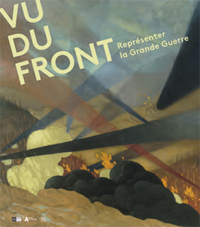 Prior to 1914, no conflict had generated as many intense images as the First World War. In addition to sketch artists, painters and soldiers already serving on the front lines, government agencies and official war artists were also commissioned for documenting information to construct a visual discourse.
Prior to 1914, no conflict had generated as many intense images as the First World War. In addition to sketch artists, painters and soldiers already serving on the front lines, government agencies and official war artists were also commissioned for documenting information to construct a visual discourse.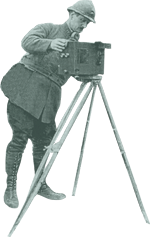 The young visitors’ itinerary starts in the main courtyard where mystery objects are reproduced on four didactic panels on display on the pillars. You should then proceed to the exhibition which starts on the ground floor up and ends up on the third floor. Nine didactic panels and notices designed especially for children offer a playful way and a concrete approach of both images and objects. A fun and enriching activity for the whole family to better understand how professional and emerging artists chose to depict the Great War.
The young visitors’ itinerary starts in the main courtyard where mystery objects are reproduced on four didactic panels on display on the pillars. You should then proceed to the exhibition which starts on the ground floor up and ends up on the third floor. Nine didactic panels and notices designed especially for children offer a playful way and a concrete approach of both images and objects. A fun and enriching activity for the whole family to better understand how professional and emerging artists chose to depict the Great War.Entrance to the exhibition and ticket offices |
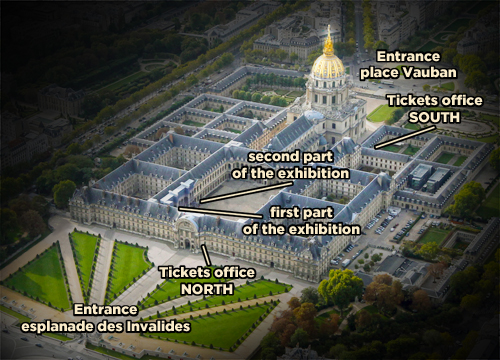 |